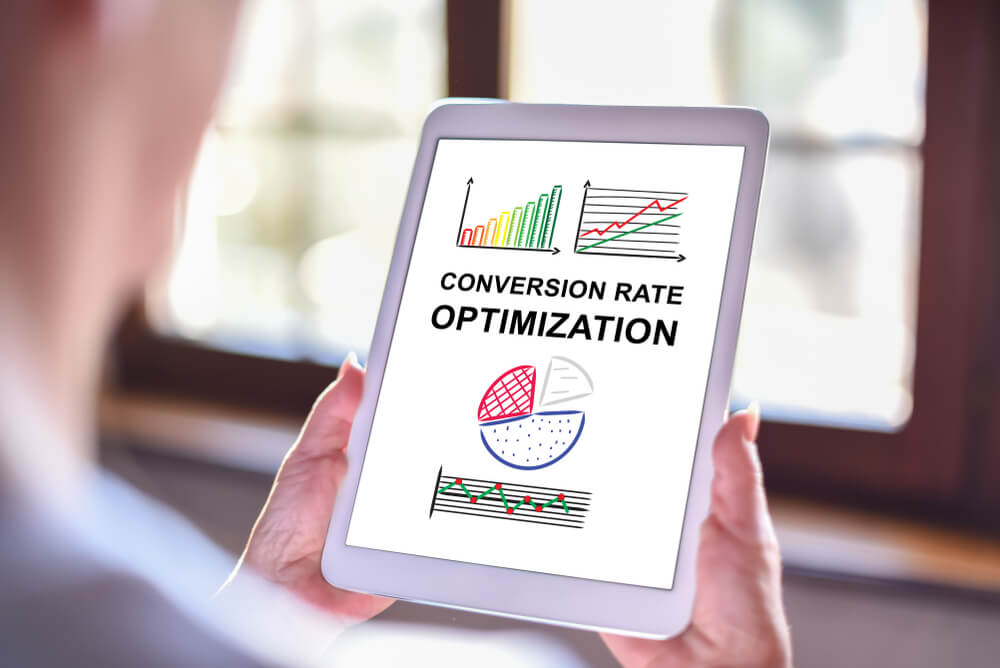
Increase SaaS Conversion Rates: Easy Tips for the Best Metrics and KPIs
The challenges of SaaS marketing might be complex, but the conversion rate is a vital performance measure that cannot be overlooked. Collaboration with a SaaS marketing agency can provide useful insights into optimizing this critical parameter.
A strong conversion rate shows that your SaaS company converts leads and trial users into committed clients, indicating long-term growth. Tracking conversion rates lets you find and fix sales and onboarding issues.
This comprehensive guide covers the following topics:
- Understanding SaaS conversion metrics.
- Strategies to increase SaaS conversion rates.
Ready to elevate your conversion game? Let's go!
Want to know how we help SaaS businesses stand out from the crowd? Watch this video to learn how DAP makes it happen!
Understanding SaaS Conversion Metrics

This complex SaaS marketing landscape requires a comprehensive understanding of conversion analytics. These metrics analyze marketing performance and reveal user behavior.
1. Conversion Goals
Conversion goals are specific actions or milestones that companies aim for users to achieve within their software or website. For example, a common conversion goal in SaaS is for a trial user to upgrade to a paid subscription. Achieving this indicates that the user finds value in the software and directly contributes to the company's revenue.
2. Macro and Micro Conversions
In SaaS marketing, conversions are often categorized into micro and macro types.
- Micro conversions are users' smaller yet significant actions before reaching the primary goal, often a macro conversion. For instance, micro conversions are signing up for a free trial or downloading a whitepaper. These actions show user engagement and interest but might not directly result in revenue.
- Macro conversions are high-value actions that directly influence the bottom line. The most common example is when a user upgrades from a free trial to a paid subscription.
Both types of conversions are vital. Micro conversions often serve as stepping stones to macro conversions, and tracking both can provide a comprehensive view of user behavior.
3. Conversion Analysis
Conversion analysis involves scrutinizing the performance of a website or application to gauge its effectiveness in converting users into taking desired actions. Such actions may include sign-ups, purchases, or subscriptions. For example, if your SaaS company's conversion rate is above the industry average of 7%, it's a strong indicator that your marketing efforts are paying off.
Tips to Increase SaaS Conversion Rates

SaaS conversion rates depend on the product industry, sales strategy, software trial type, and the engagement mode used. With these factors in mind, SaaS companies can improve their conversion rates accordingly. Here are the best strategies.
1. Simplify the Onboarding Process to Boost User Activation Rates
Simplifying the onboarding process for a SaaS product can boost user activation rates, reducing the time it takes for users to experience the product's value. This also increases user engagement and retention and improves conversion rates and customer satisfaction.
By streamlining onboarding, SaaS companies could reduce support inquiries and minimize churn, leading to higher lifetime customer value. Additionally, the process facilitates user feedback and rapid iteration for continuous improvement.
Simplify the onboarding process with these techniques:
- Ask for the minimum amount of information necessary to get users started.
- Use progressive profiling and gather additional user information gradually as users engage with your platform over time.
- Offer guided tours or interactive tutorials that walk users through critical features and functionalities.
- Utilize simple and jargon-free language in the onboarding communications.
- Provide easily accessible in-app support resources such as a knowledge base, SaaS blogs, chat support, or tooltips.
These onboarding simplification strategies create a more user-friendly and efficient experience, inspiring users to complete the onboarding process and convert into paying customers.
2. Provide Value to Increase User Engagement and Customer Satisfaction
Providing value for a SaaS product directly influences several key metrics. It enhances customer retention by keeping users satisfied and engaged, reducing churn rates. It increases user engagement, customer satisfaction (CSAT), and net promoter scores (NPS) because of the perceived value of the software product.
Additionally, value provision contributes to higher customer lifetime value (LTV) and expansion revenue as users are more likely to upgrade or purchase additional features. It also positively impacts referral rates, usage/adoption metrics, customer success indicators, renewal rates, and overall customer satisfaction, making it a central element of SaaS success.
Showcase the value of the SaaS product early on. To engage users, offer a compelling demonstration or tutorial highlighting key features and benefits during onboarding. Remember these techniques to highlight SaaS product values:
- Design an intuitive onboarding process that guides users through the essential features and benefits of the product.
- Highlight what users can achieve and how it solves their problems.
- Utilize user data to offer personalized recommendations and suggestions. Show users content, features, or actions aligning with their needs and goals.
- Encourage them to complete tasks or actions that demonstrate the immediate benefits of the SaaS product. For example, for a project management tool, help them create and complete a project within minutes.
- Use email automation to engage with users after sign-up.
By following these strategies, you accelerate the time it takes for users to perceive the value of your SaaS product, increasing conversion and user retention.
3. Segment and Personalize for Higher Conversion Rates and CLV
Segmenting and personalizing marketing efforts for a SaaS product directly affects several key metrics. It leads to higher conversion rates as tailored messages resonate better with specific customer segments. It can reduce customer acquisition costs by focusing resources on the most promising prospects.
Personalization also increases customer lifetime value and lowers churn rates by delivering content that addresses individual needs. It enhances customer engagement, satisfaction, and referral rates, all while improving marketing ROI by more effectively allocating resources.
Tailor messaging and user experience to user segments. Include data-driven personalization to provide relevant content, recommendations, and pricing options. This ensures that users feel that the product meets their needs. Segmentation and personalization are more efficient with these strategies:
- Divide the user base into segments based on industry, job role, company size, or usage patterns.
- Analyze user behavior within the SaaS application. Track how users interact with the product and what features they use most.
- Create personalized content for each user segment, including emails, in-app messages, and landing pages.
- Use content marketing strategies for SaaS companies to create personalized content.
- Implement recommendation engines that suggest relevant content or features.
- A/B tests personalized messaging and content to refine the marketing approach. Experiment with variables such as subject lines, imagery, or offers.
Companies can create a more tailored and relevant user experience by segmenting and personalizing SaaS marketing efforts. These increase engagement and the likelihood of conversions.
4. Use Social Proof and Trust Signals for Higher Retention and Customer Satisfaction
Social proof and trust signals impact conversion rates as potential customers are more likely to take action when they see positive reviews, testimonials, and endorsements from satisfied users. This reduces customer acquisition costs by making the persuasion process smoother.
Furthermore, trust signals contribute to higher customer retention and satisfaction, as users trust in the reliability and quality of the SaaS product. Encouraging customer reviews and ratings helps showcase authentic feedback and endorsements, strengthening brand reputation and leading to increased revenue growth.
Remember these best practices to use social proof and trust signals in SaaS marketing:
- Showcase authentic customer testimonials highlighting positive experiences and results with the SaaS product. Include details such as the user's name, company, and the benefits that they have gained.
- Create in-depth case studies illustrating how the SaaS solution answers specific customer challenges.
- Include before-and-after scenarios to demonstrate the tangible value that the product offers.
- Encourage satisfied customers to leave reviews and ratings on G2 Crowd, Capterra, or Trustpilot platforms.
- Showcase trust badges and certifications related to data security, privacy compliance, or industry standards.
- Display the logos of high-profile clients on the SaaS website. Associations with respected organizations enhance credibility and trustworthiness.
Summing Up
By implementing these SaaS conversion strategies, companies can create a user-friendly and persuasive environment that encourages more users to convert into paying customers. These actions ultimately drive the growth of a SaaS business.
A SaaS marketing agency can help you increase conversions and boost revenue and growth. They specialize in promoting SaaS products, possessing deep industry knowledge and proven strategies to target the right audience. Additionally, outsourcing marketing to experts allows SaaS companies to focus on product development and customer satisfaction.
Contact Digital Authority Partners (DAP) today for the latest in SaaS marketing techniques.
Want To Meet Our Expert Team?
Book a meeting directly here




